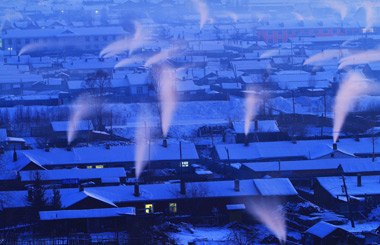Travel Notes from Cologne, Germany
I arrived in Cologne at 18 o'clock or so, local time, claiming my baggage and passing the security checks. I got onto the shuttle heading to the place where I was supposed to meet my host family. The scenes along the highway intrigued me, as they appeared sharply different from those in the Chinese city where I live. Passing the cars on the highway, the shuttle rushed along golden fields stretching on both sides. As the shuttle approached my destination, the vista was transformed from farmland into a series of residential areas with a lake with the wind spraying water drops and building water waves.
Time was flying. After some basic salutations from my host family, the father drove me to a restaurant for dinner. When we were back to his home, I suddenly felt exhausted for that ten-hour flight. I asked Robert, my exchange partner, for a place to sleep, hoping to begin my adventure in Cologne early tomorrow. As soon as I hit the sack, I fell asleep.
Next day was the beginning of my travel in Cologne. At breakfast three traditional German cheese-turkey sandwiches greeted me. As I was walking to the meeting point, I noticed that many places in Cologne are archaeological excavation locations. I wondered what kind of history could be discovered within these places. During World War II, Jewish people used two of these buildings as shelters and it gained the name Jewry Street. The building itself was of Roman architecture and for the majority of my time at Cologne I was able to see the influence that Rome had on the city’s past and present.
When I arrived at Rhine River, I listened to the introduction of the River presented by our tour guide under the stone bridge, watching the water wave up and down and appreciating the magnificence of the castles standing on the top of the hills. The Rhine River, the guide said, is the cradle of the black magic, a branch of old alchemy, which is full of incredulity and dark legend.
The Rhine is the place once hailed and dominated by royal kinship. This section is the most important and vital part of Germany because it is also the military center and the origin of the history of modern city development. Twenty-three castles stands on both sides of the Rhine, some were renovated, while most were left untouched as relics.
Strolling along the river, I arrived at one of the castles ruins called Rheinfels Castle and Fortress. The place where the castle now stands was an Abbey built around 765 CE, which served as the religious center of Cologne. The Counts of Katzenelbogen became provincial lords at the beginning of the 13th Century and Count Diether V erected the first castle building. In order to pay for the construction, the Count imposed a higher toll in 1255, which made transport of goods more difficult and the Town Alliance attempted to besiege the castle, but were pushed away. The castle was seen as an important strategic location and given its dual capacity as a fortress many successive generations fought for power of the castle. By the time that French Revolutionary forces moved into the Rhine in 1794, the weaponry of the castle was outdated and the fortress was handed over without resistance.
Since then, the castle remained in ruins. In 1925, the Town of St. Groar passed a law to protect, maintain and renovate the entire fortification. Lingering alongside the ancient walls, I thought about the speed at which something so grandiose could come to ruins.
Humans can be so rapacious that they want to possess everything in the world, including a wonderful castle like this. Every kingdom craved for the castle, because of its geological location and its political position, which make conflicts inevitable. In a way, thinking about history makes me an affirmed pacifist. What seemed so necessary in the moment seems like great toil and pain over the course of centuries. Consider the situation in Syria today. The country is falling into near total collapse with individuals fighting for their lives.
The future remains uncertain, but if there is anything we can take from history is that cooperation brings progress. Even in the time of war we find cooperation would bring together great strength. In the development of the atomic bomb, the work of J. Robert Oppenheimer, Albert Einstein and various other scientists not only brought one of the most destructive weapons known to men into existence, but also ushered in a new period of scientific discovery. For instance, at Oxford in the 1950s Alice Stewart devoted her time to explaining the effects of radiation. She collaborated during this time with the statistician George Kneale. Kneale, though, was known for his combative and less than sociable attitude. Stewart was sociable, empathetic and talkative. Yet the two collaborated over the years and to date Stewart’s papers on radiation are still very influential. Cooperation and collaboration—the combination of ideas, personalities and talent—continue to be the way in developing social advances.
I am standing on a side of Rhine River with the setting sun, reviewing the history of Romans and others that lived on this land. I believe history is a navigator to the future that will help us to be more introspective about our behavior and perhaps guide us to better and more harmonious days.




















